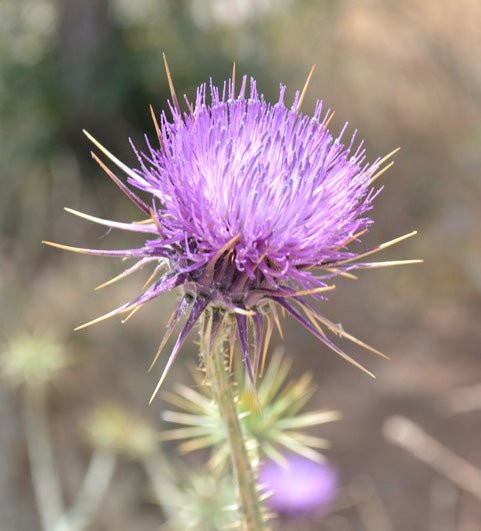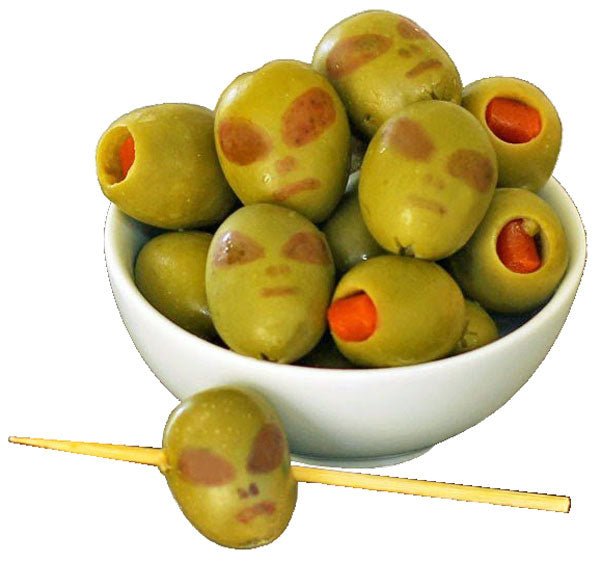 When we first posted the article about Making Rennet from Fig Sap, we had many inquiries in the comments section about making rennet from thistle. At the time, 2011, there was very little info available about it, so we didn’t pursue the subject.
When we first posted the article about Making Rennet from Fig Sap, we had many inquiries in the comments section about making rennet from thistle. At the time, 2011, there was very little info available about it, so we didn’t pursue the subject.
Now, 6 years later, there is finally a non-GMO thistle rennet, made in the US and available for home cheese makers – Cynzime. We are selling it in 2 ounce bottles (R8-2oz) and in kilogram (32 ounce) bottles* – click here.
What is it?
Thistle (also called Cardoon) is actually a weed- Cynara cardunculus. It grows mainly in Mediterranean countries – Portugal, Spain, southern France, Italy, Greece and some North African countries. It is also being cultivated in California, Mexico, Argentina and Australia.

Photo from Alimentarium
Thistles bloom in early summer and only the purple blossoms are processed for making rennet.

From Formaggio Kitchen
Basically, the petals are dried, ground very fine, placed in water for a day and filtered until the liquid is fully extracted. This liquid is used as rennet.

From a PowerPoint presentation at the ACS website.
How is it used?
Thistle rennet has traditionally been used with goat’s milk and sheep’s milk, however, our friend, Ian Truer at Winding Road Cheese in Alberta, Canada** makes all his cheese from organic cow’s milk and thistle rennet and he won second place in the 2017 ACS Competition for his RDB cheese. So, if you are a home cheese maker, we recommend you try making it with whatever milk you have.

Ian’s RDB cheese. Photo from Cynzime website
At home: When you first try it, use 1/2-1 tsp per gallon of milk. It is effective up to 158F. We recommend that you stir it longer than other types of rennet when you add it to your milk and that you let it set for at least 2.5 hours in order to achieve a firm curd. The optimum pH is 5.0-5.5, but, this takes longer to achieve than with other types of rennet. (If you have any questions about specific recipes, please send them to info@cheesemaking.com.)
What will the results be?
As with any vegetable rennet, thistle rennet may lend a faint bitterness to your cheeses when they are aged for more than 2 months. This flavor can be used to advantage – to balance out other flavors, as it has been, historically, in Portugal and other countries. This description comes from Jake Lahne at Serious Eats:
Cheeses made with thistle rennet tend to become extremely soft, even runny as they age, while at the same time developing a thick, leathery rind—they are essentially self-contained, no-prep-needed fondue. They also tend to be somewhat pungent (although they’re no Epoisses or anything, so don’t be too scared) and to have a pleasant vegetal bitterness, which I like to think comes from the thistle preparation. The coolest way to serve them is to buy a ripe wheel, let it come to room temperature, and cut off the top like a lid. Dip in crusty bread or whatever else you have on hand. Easiest party food ever.

Photo of Azeitao cheese from Greedy Sisters
Examples of cheeses made with thistle rennet:
Made in the US – (Contact us if you know of others.)
Spring Hill Farmstead Goat Cheese in Bayside, California
Lark’s Meadow Farms in Rexburg, Idaho
Made in Spain and Portugal
The following cheeses are very hard to find in the US. In fact all of them are out of stock at iGourmet and almost everywhere they are sold. We did locate a few, so, hopefully, you can taste them, in order to know whether you want to try thistle rennet.
Portugal
Serra da Estrela – made from sheep’s milk, soft, aged 30-40 days or more, available at Portuguese Food Online and Deli Portugal.com
Azeitão – made from unpasteurized sheep’s milk, semi-soft, aged 21 days minimum, available at Deli Portugal.com
Castelo Branco – made from unpasteurized goat’s and sheep’s milk, semi-soft, generally aged 45 days, but sometimes over 90, available at Deli Portugal.com
Serpa – made from unpasteurized sheep’s milk, soft, aged 30 days for sale in Portugal, 60 days for US, available at eBay and Deli Portugal.com
Nisa – made from unpasteurized sheep’s milk, semi-hard, aged 45 days minimum, available at Deli Portugal.com
Évora – made from unpasteurized sheep’s milk, aged 30-90 days
Zimbro – made from unpasteurized sheep’s milk, soft, aged 35-60 days, available at Murray’s Cheese
Spain
Torta del Casar – made from unpasteurized sheep’s milk, soft, aged at least 60 days, available at Murray’s Cheese
Torta La Serena – made from unpasteurized sheep’s milk, soft, aged at least 60 days
* The kilogram bottles are Kosher (Kof-K) and Halal (IFANCA), but we transfer the rennet to smaller bottles (without Kosher supervision) and that voids the Kosher certification.
** In 2012, we posted Ian’s recipe for Crescenza – Crescenza with Ian Treuer of Cheesepalooza.














































































































































